When you step outside at night, the first thing you want is clear visibility and a feeling that nothing can sneak in unnoticed. The right outdoor lighting does exactly that. Below you’ll find straight‑forward advice on floodlights, security lights, installation height, and the on/off dilemma – all without the tech jargon.
Floodlights smash a wide, bright beam across a large area. Think of them as the stadium lights that make a whole driveway glow. Security lights, on the other hand, focus on specific spots like doors, windows, or motion‑triggered zones. Using a floodlight for a small porch can waste energy, while a security light on a sprawling yard may leave dark corners. Match the tool to the job: floodlights for broad coverage, security lights for targeted deterrence.
Height matters more than you might think. Most experts suggest placing security lights between 8 and 10 feet high. This range gives a good line of sight and reduces glare for passersby. Floodlights can sit a bit higher—12 to 14 feet—so the beam spreads evenly without creating harsh shadows. If you mount too low, intruders can step under the light; too high and the light scatters, losing intensity where you need it most.
Before you climb a ladder, check for obstacles like trees or over‑hangs. A clear path ensures the light reaches the intended area and reduces the chance of false alarms caused by moving branches.
Pick a flood light that balances brightness with energy use. Look for LED models with a rating of at least 2,000 lumens for most residential yards. Weather resistance is a must—opt for an IP65 or higher rating so rain and dust won’t short the system. If you want extra security, choose a unit with a built‑in motion sensor; it flashes brighter when someone approaches, which can startle potential thieves.
Durability isn’t just about the housing; the mounting brackets should be stainless steel to avoid rust. A solid installation saves you from re‑tightening screws every season.
Leaving lights on all night wastes power and can annoy the neighbours. A smarter approach is to use timers or smart switches. Set the lights to turn on at dusk and off at a reasonable hour, or let a motion sensor handle the rest. This way, the light only shines when activity is detected, cutting down on energy use while still warning intruders.
If you live in a high‑traffic area, consider keeping a low‑level security light on continuously near the front door. The constant glow creates a visual barrier, while motion‑activated spotlights add an extra layer of surprise when someone moves around the property.
Remember, the goal isn’t just to light up the space—it’s to make an intruder think twice. Combining well‑placed floodlights, correctly positioned security lights, and intelligent on/off schedules gives you a robust, cost‑effective outdoor security system.
Ready to upgrade? Start with a quick walk around your property after dark. Note any dark spots, measure the heights of existing fixtures, and decide whether you need broad floodlight coverage or focused security lighting. A few smart tweaks can turn a dim, vulnerable yard into a well‑lit deterrent zone, giving you peace of mind without breaking the bank.

Leaving a security light on all night wastes energy and reduces effectiveness. Motion-activated LED lights save money, last longer, and deter intruders better by surprising them with sudden light.
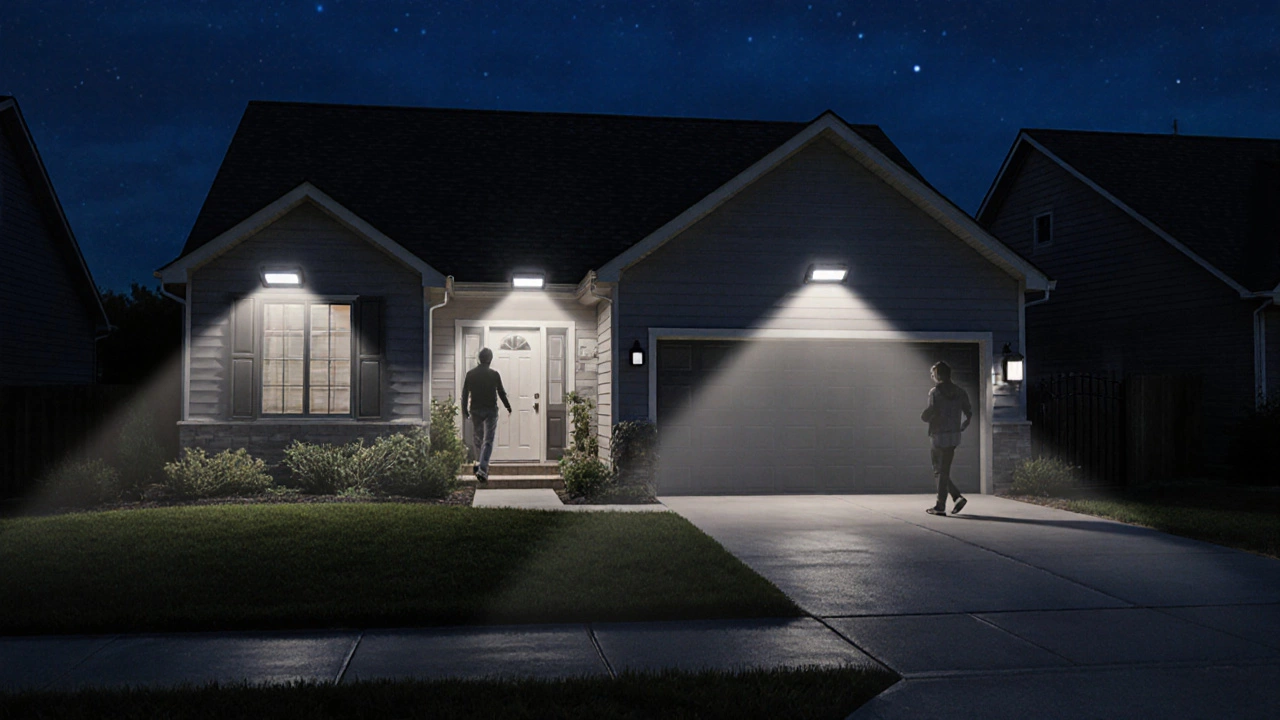
Learn how to choose outdoor security lighting that actually works-covering brightness, color temperature, motion sensors, solar vs. hardwired, placement, and real-world tips for 2025. Stop guessing. Start protecting.
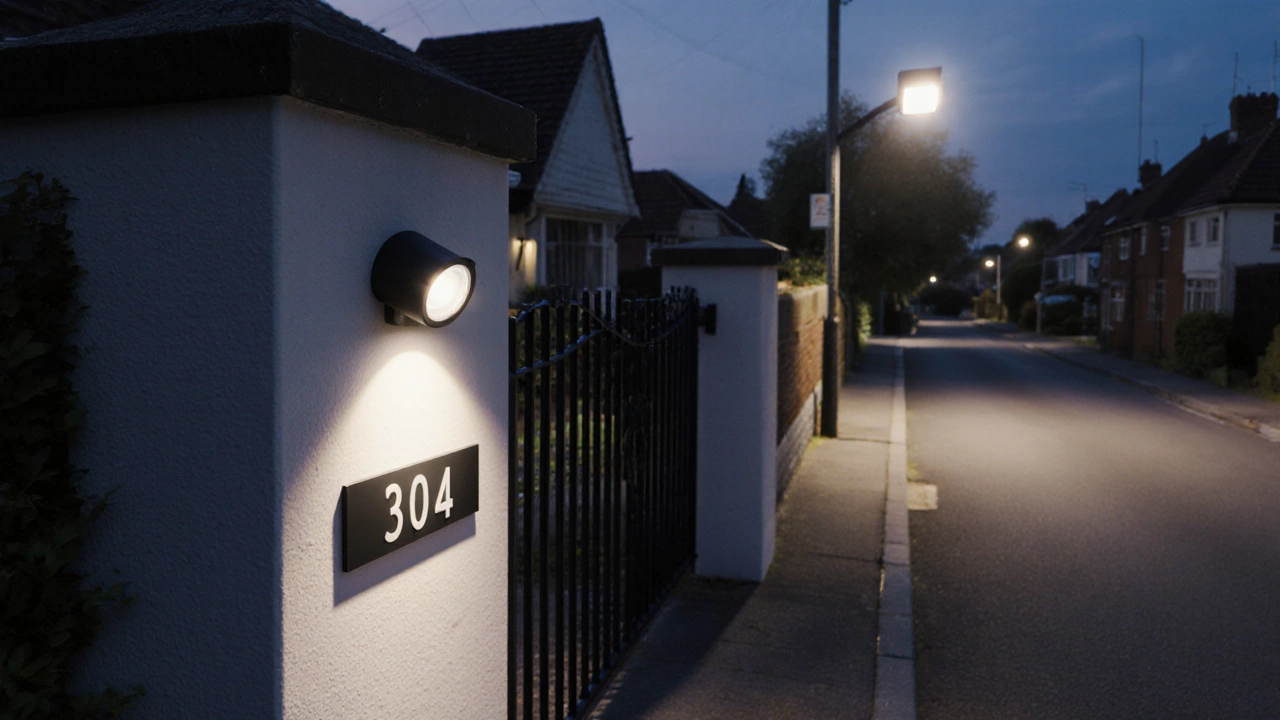
Find out whether a spotlight or floodlight is best for your driveway, covering safety, cost, installation and smart‑home options.
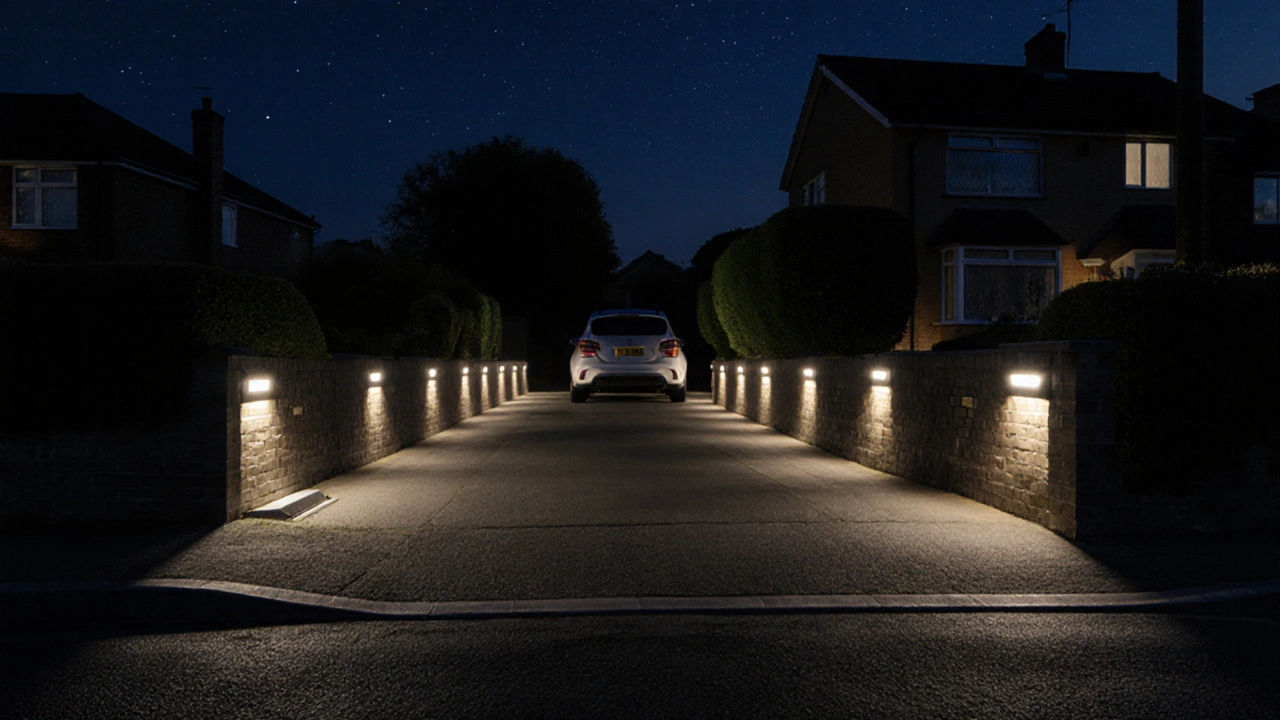
Learn how to safely illuminate your driveway with LED, solar, or motion‑sensor lights. Get step‑by‑step design, wiring, and maintenance tips for lasting security.
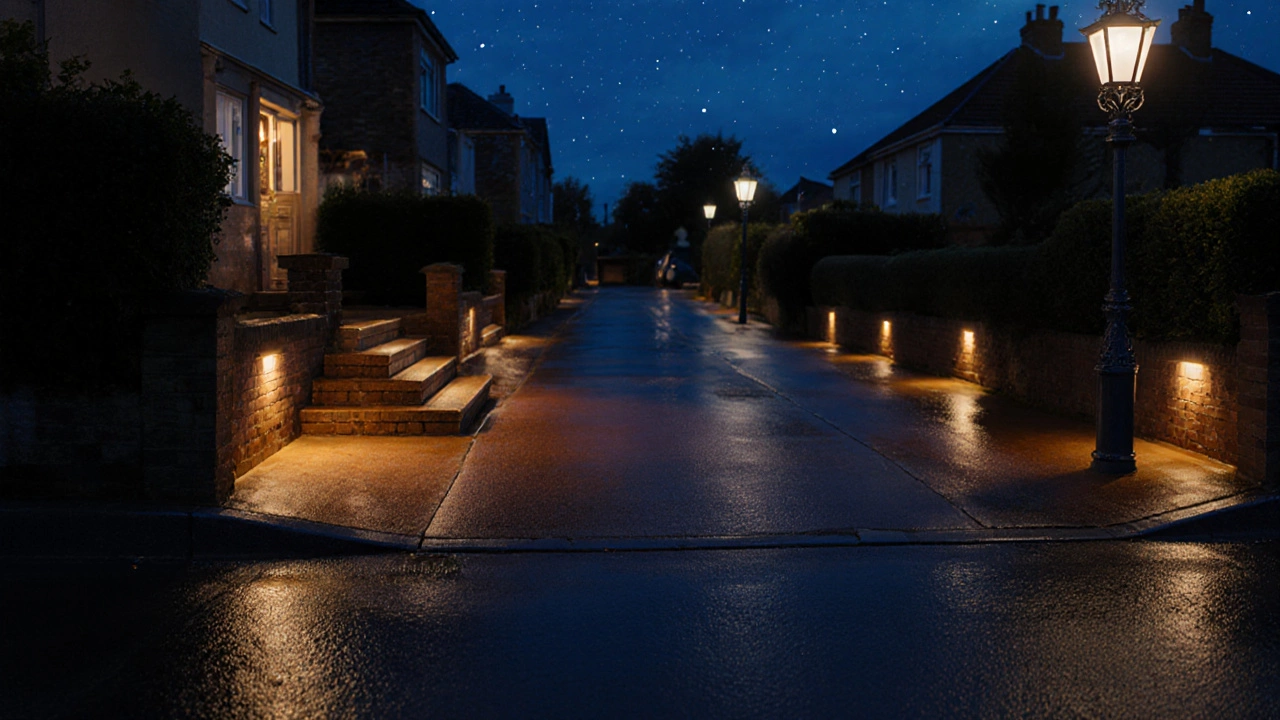
Discover the exact names of driveway lights, their types, how to choose, install, and maintain them for safety and style.
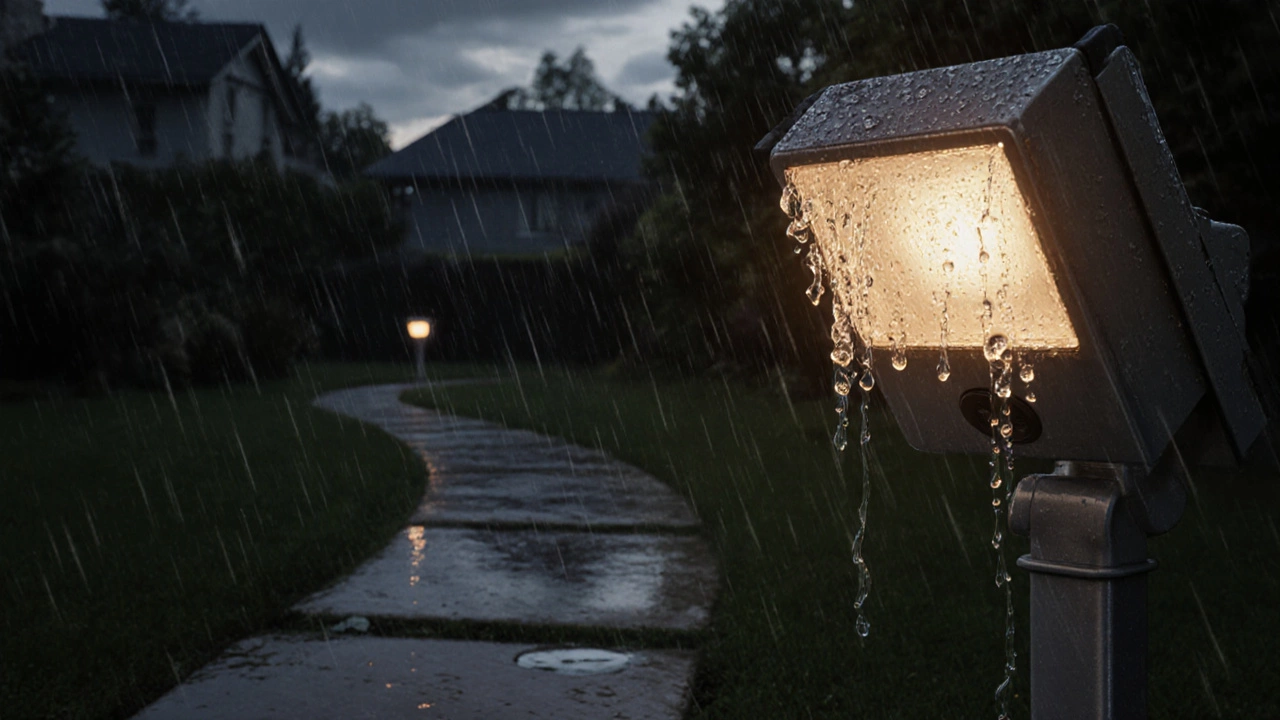
Learn how to keep outdoor lights working through rain with IP ratings, sealants, proper wiring, and easy maintenance tips.
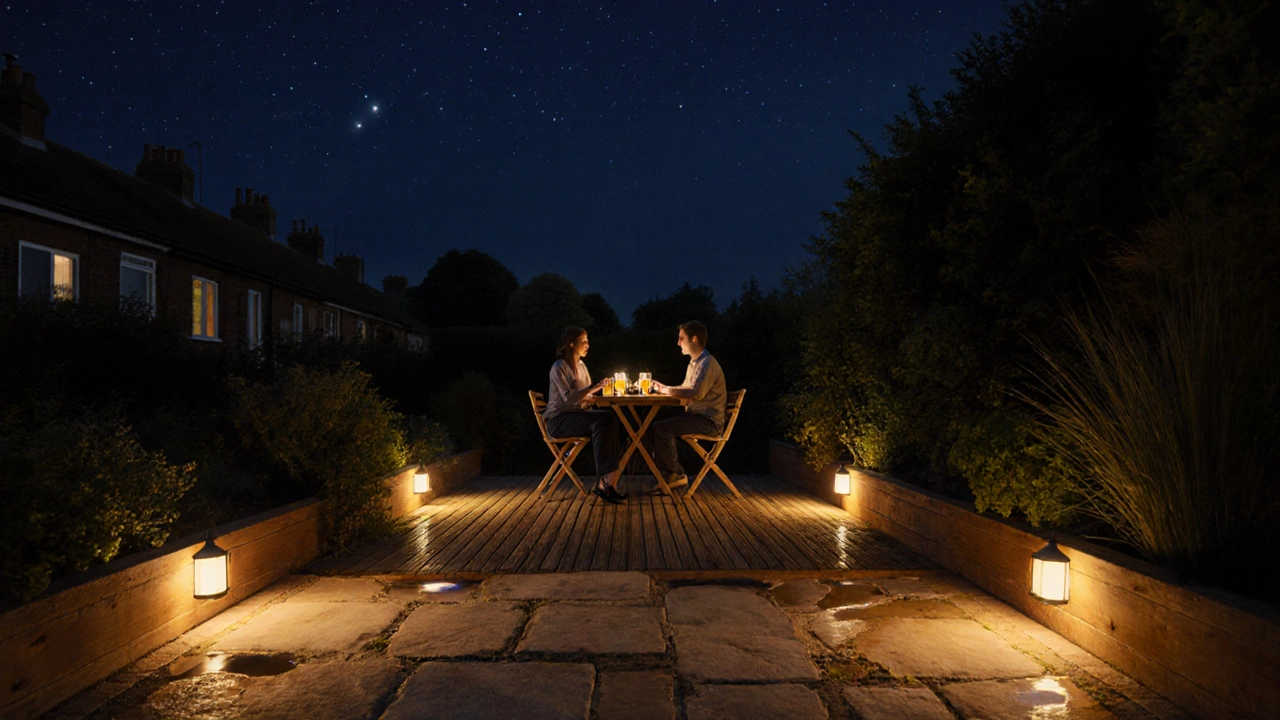
Learn which outdoor light colors keep bugs away, why they work, and how to choose the right bulbs for a bug‑free patio.
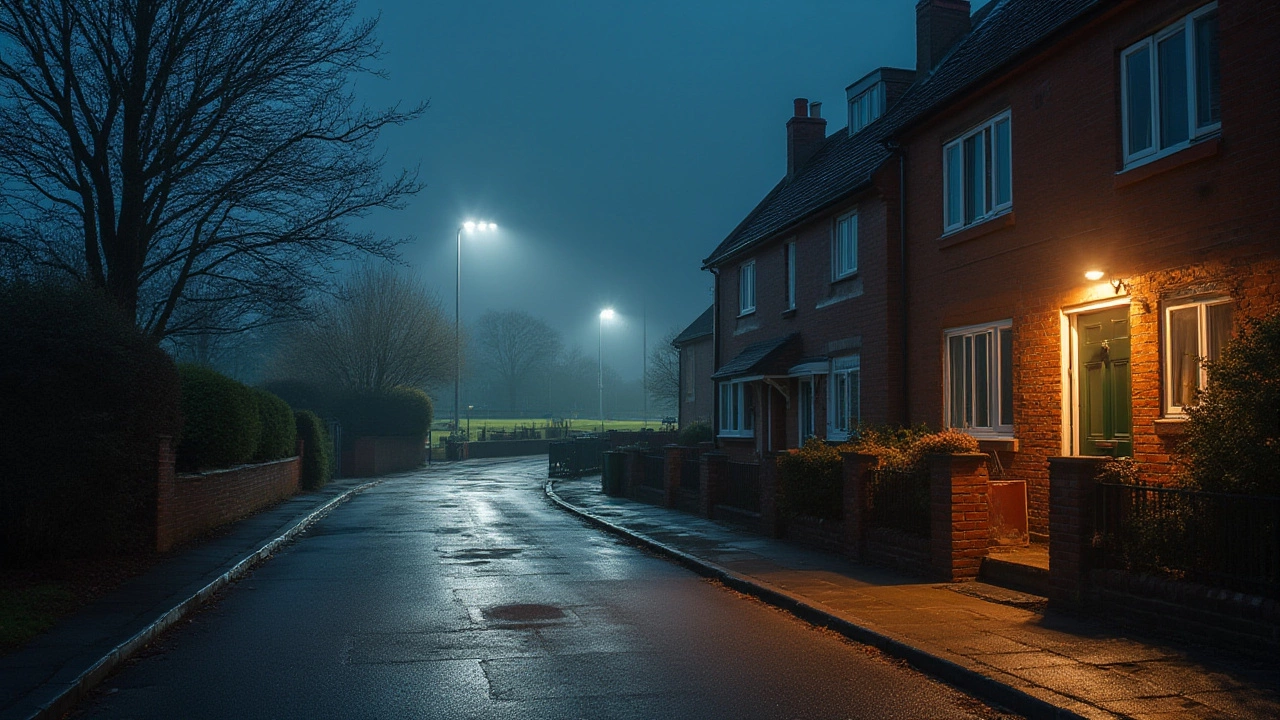
Floodlights and security lights might seem the same, but they're designed for different jobs. Here’s how they really differ, with all the facts and tips you need.
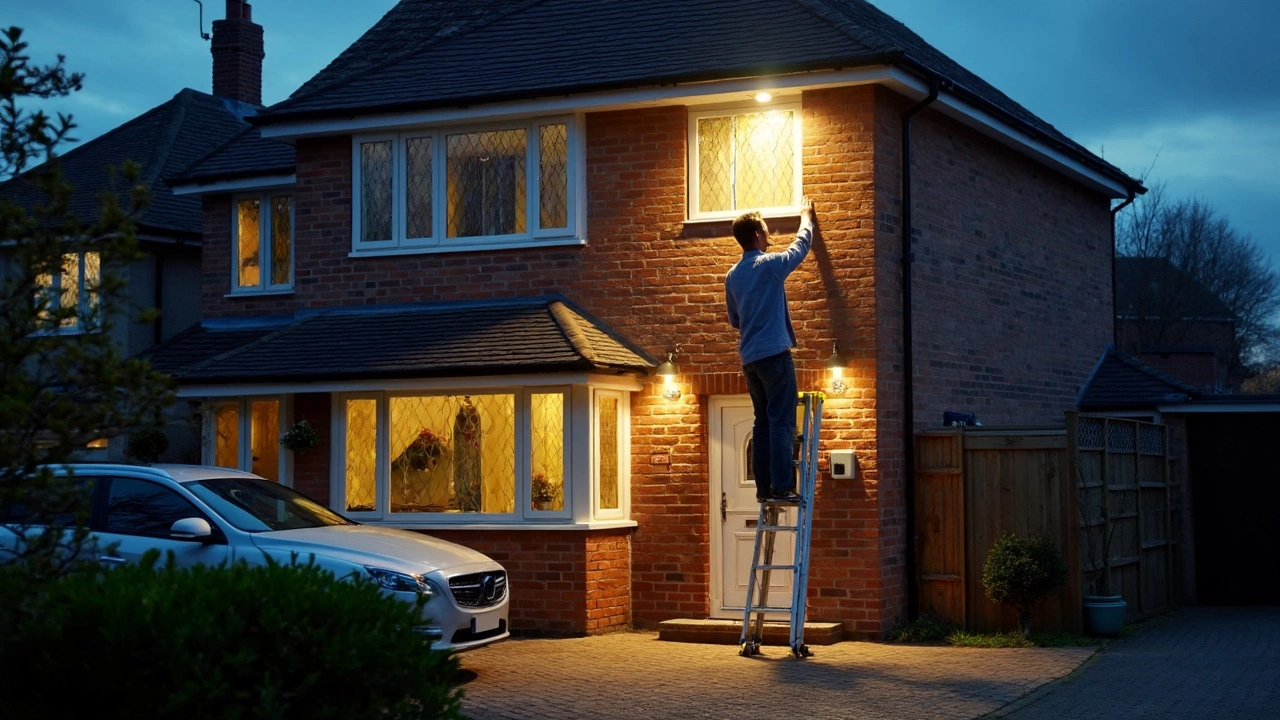
Curious about how high to set your security lights for the best coverage? This article explains the ideal height for different types of outdoor security lights, why it matters, and how it keeps your property safer. We break down practical tips and real-life mistakes to avoid. Learn how to outsmart both intruders and annoying false alarms, plus a few tricks that might surprise you. Get the facts before climbing that ladder.
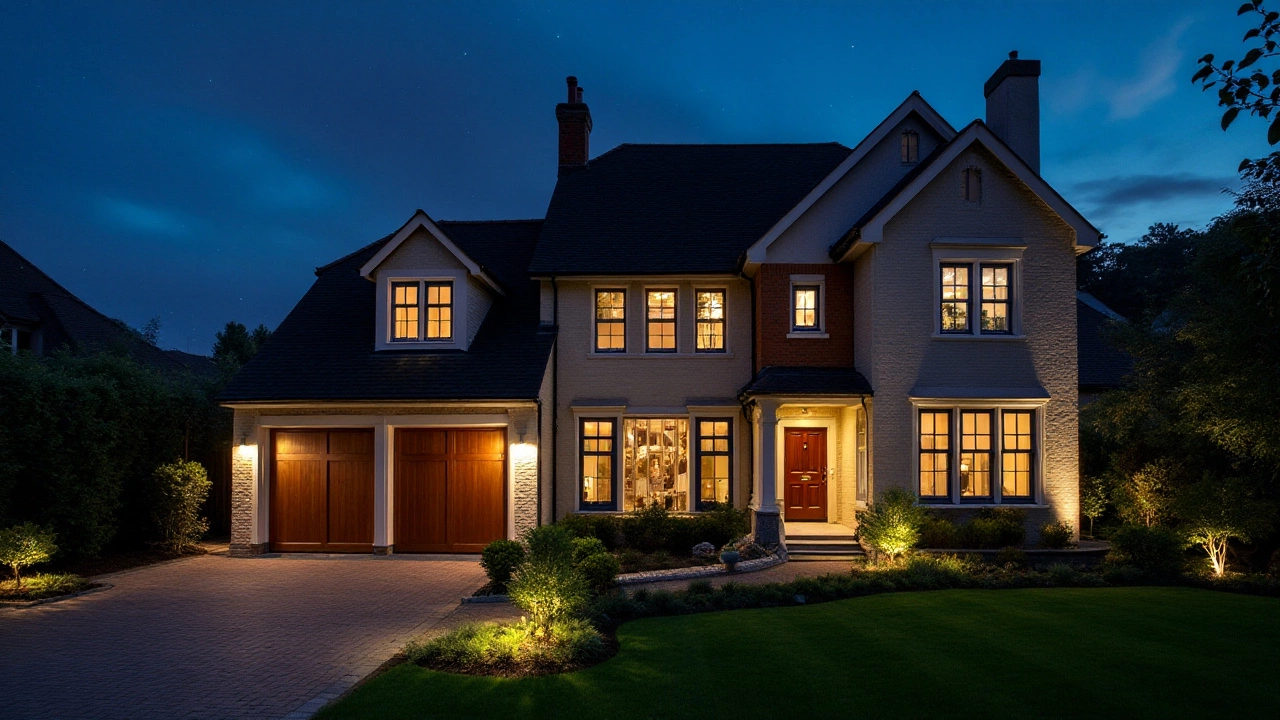
Selecting the right outdoor flood lights is crucial for enhancing the security and ambiance of any property. Considerations include factors such as brightness, energy efficiency, durability, and installation. This article provides valuable insights into choosing the best flood lights to deter unwanted visitors and improve nighttime visibility. It also covers the importance of durability and weather resistance to ensure long-lasting performance.
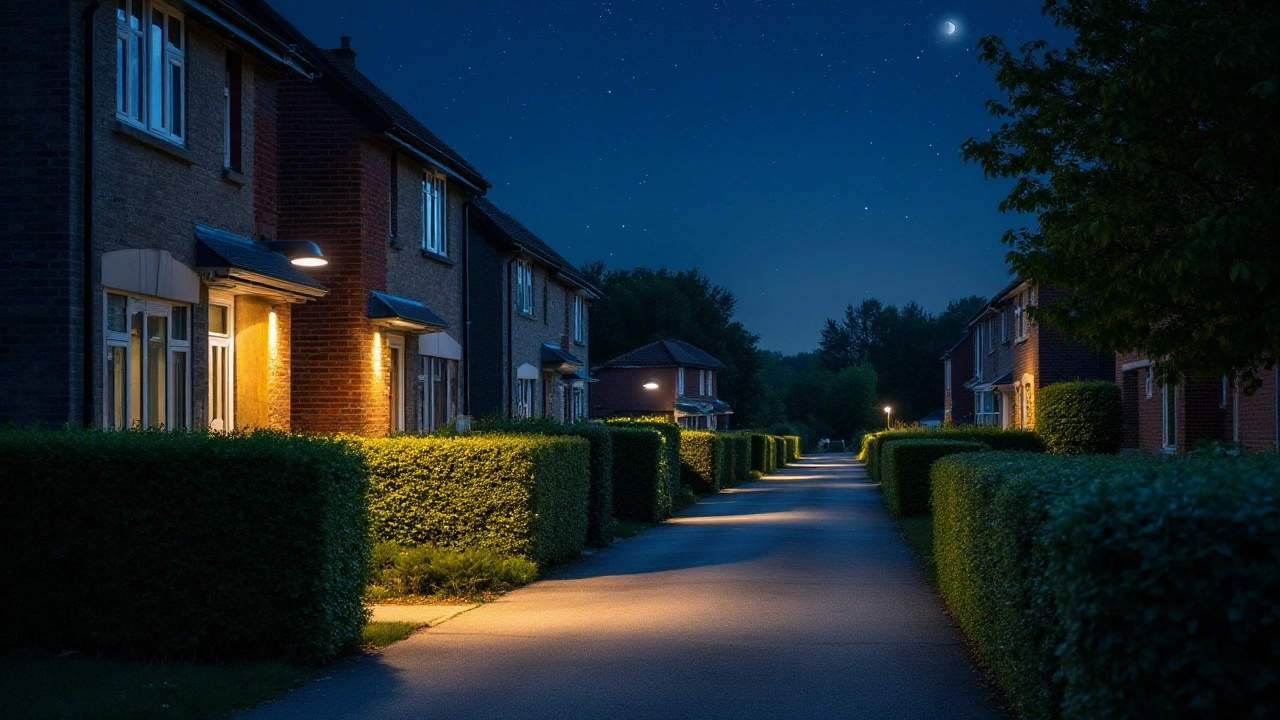
Deciding whether to keep your outdoor security lights on or off can be tricky. While leaving them on might deter intruders, it also raises questions about energy consumption and light pollution. This article explores both sides of the debate, offering insights into effective strategies for maintaining safety without compromising on environmental impacts. Discover practical tips to enhance your home’s security using lighting efficiently.